Our Blog
Il Palio and the Super Tuscan Story
The di Lusso Estate il Palio wine is the only red blend in our portfolio. We’ve been producing it since 2002 – our first vintage. To some it’s seemed a bit ‘exotic’ – the use of Cabernet Sauvignon, a French varietal from Bordeaux as the base wine, then blending it with Italian reds, and its relatively rich fruitiness (as opposed the predominantly savouriness of most Italian reds) all made for an unusual point of difference.
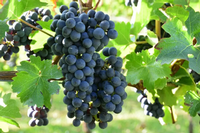
DNA evidence determined that Cabernet Sauvignon was the offspring of a chance mix of Cabernet franc and Sauvignon blanc, most likely as chance crossing that occurred in the 17th century.
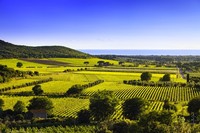
Within a hundred years the variety was widely grown in Italy - winemakers being convinced by its food friendliness, the less ‘sugary’ flavours it rendered to a bigger, richer blend. But also because to winemakers it offered up a ‘doughnut’ effect in the mid palate that encouraged other complementary varieties into the blend to “fill out the mid-palate”.
The style remained rare until the 1970’s, which saw a revolution in Italian winemaking. Following two decades post-war that saw in effect the disintegration of the Italian wine reputation, the government introduced an appellation system similar to that introduced into France in 1935.
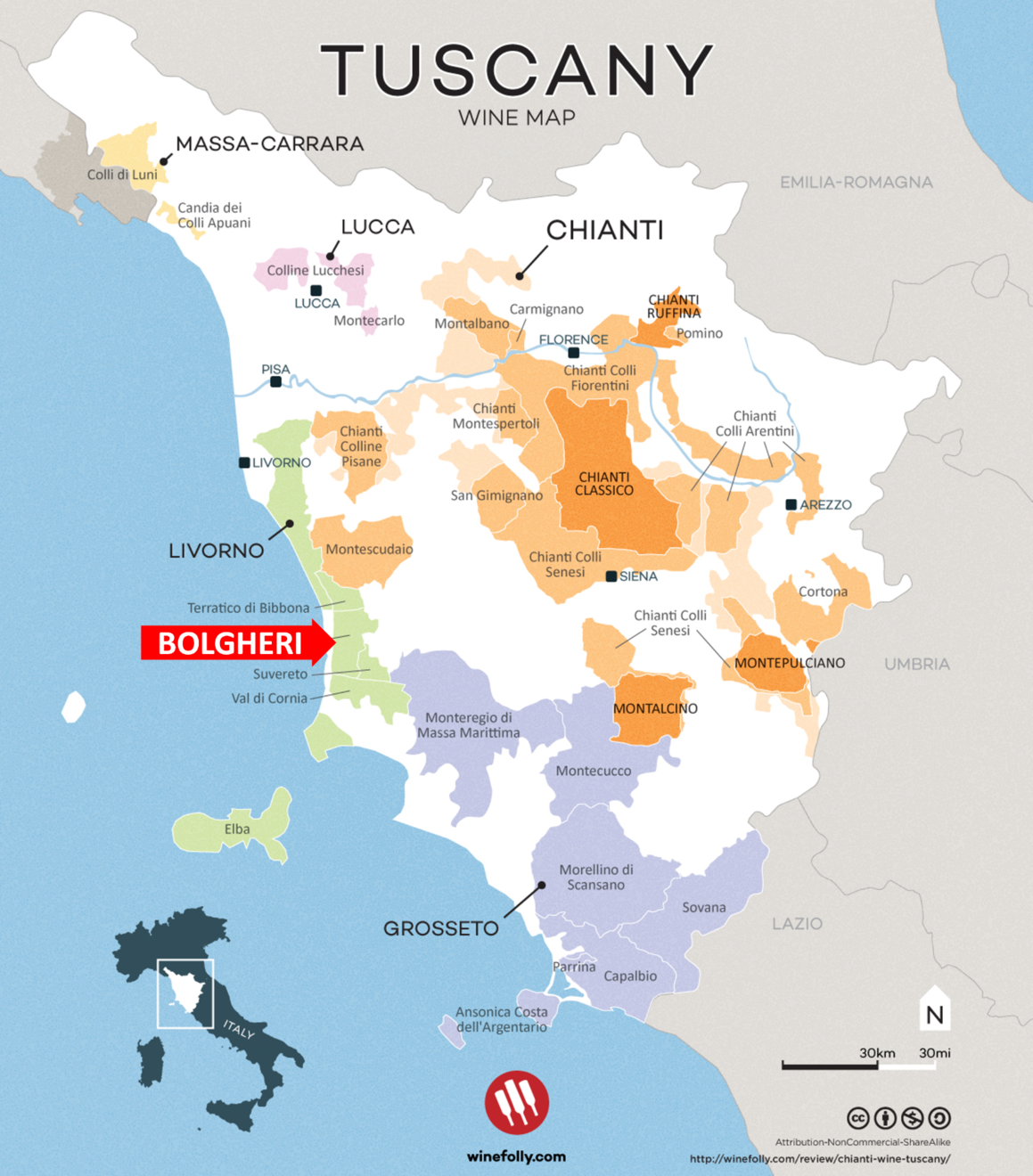
Each region and each varietal was carefully defined in every way – density of vines, use of water, use of oak, time before release, etc - to a degree of precision that didn’t appeal at all to a number of Tuscan winemaking ‘heavyweights’.

But the wine writers of the world became aware of the region. I maintain that the most influential of them all – Robert Parker – visited Bolgheri in the mid 1980’s and proclaimed in his Wine Advocate magazine, “These are not only Tuscan wines, they’re Super Tuscan”.
And so a new wine class was born. In 1992 the Italian government established an Appellation specifically for these wines – IGT or “Typical Geographic Indication".
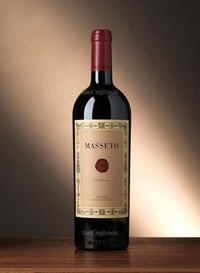
A rather silly title, but a hard-earned one. Today, they are some of the world’s most expensive wines. For example, the top of the range 2011 Masseto would cost $3700 a bottle; not far off the top Bordeaux or Burgundies of France.
Famous Bolgheri/Marremma producers include Antinori, Frescobaldi, and Angelo Gaya from Piedmont.
di Lusso Estate il Palio
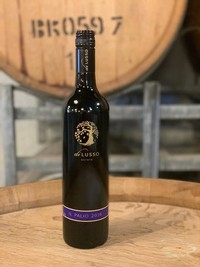
At di Lussso Estate, our 2016 Il Palio (named after the Italian tournaments commemorating historical events of the Middle Ages) is 80% Cabernet Sauvignon, 10% Sangiovese and 10% Barbera, with a cellar door price of $33.
Question: is the Masseto a hundred times better? Unfortunately, wine doesn’t work like that!
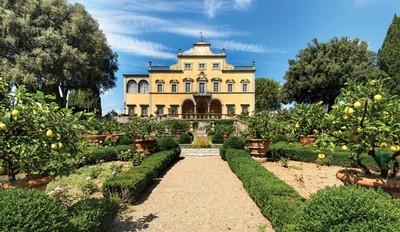
As an aside, in the 16th century the villa belonged to the Del Giocondo family. In 1505, Leonard da Vinci was commissioned to paint the wife of Francesco Del Giocondo.
The painting, formerly known as La Giaconda, is actually the famous portrait of The Mona Lisa, now preserved at the Museum of the Louvre in Paris.
The home of famous Bolgheri/Marremma producer Antinori, the Villa Antinori Di Monte Aguglioni.
Robert
The Sparkling Barbera of di Lusso
Origins
Italy produces more different kinds of sparkling wine than any other country in the world. In fact, they have been crafting spumantes since Etruscan times – prior to the Romans times, and long before Dom Perignon and his French brethren discovered it by mistake. The range of styles of Italian sparkling wines is enormous - from the light, off-dry Proseccos of the Veneto to the classic Franciacorta (the best of which I think rank alongside the wines of Champagne itself) – as is the number of different grape varieties used in its production.
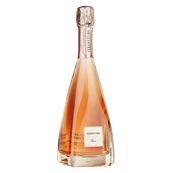
Franciacorta, of course, translates as ‘Short France’, and ever since Napoleon’s time has been using the methodé champenoise to make their sparkling wines, and still use French terminology to describe it (brut, rose, etc), and French varietals pinot noir and chardonnay as their varietals. This style has its own bottle shape. This is one favoured by Fanciacorta producers (and some of the more upmarket Proseccos).
But nobody seems to be able to tell me what it’s called!
The Charmat method
With the exception of the Franciacortas, most Italian sparkling wines – especially Prosecco - are made using the Charmat method. In this method, the wine’s second fermentation occurs in a pressurised stainless-steel tank instead of in the bottle, and the resulting wine is bottled young. There is none of the complexity and time - consuming process of ’real’ champagne. No riddling, no disgorging, no inconsistency in the final product, etc.
These are wines made in a hurry, to feed a market that is thirsty and cost-conscious. The best known of Italian sparkling reds is made from the Lambrusco grape, in an impressive range of styles.
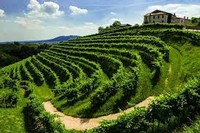
If you like it a bit sweet, pick one that says ‘Semisecco’, ‘Amabile’ or ‘Dolce’ on the label. If you like it dry, look for the words ‘Secco’ on the label (with this style the flavours are more rhubarb or strawberry). Lambrusco di Sorbara and Lambrusco Rosato (rosé) are the two lightest styles, showing strawberry, and very little or no tannin).
A typical prosecco vineyard, near the town of Conegliano in the Veneto. Rugged hills that have been tamed by hand-crafted vineyards.
di Lusso Estate Sparkling Wines
As of 2019, di Lusso Estate has joined the Italian Sparkling Club.
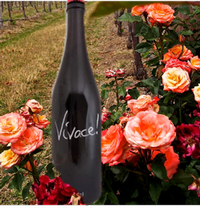
Our di Lusso Estate Vivacé, made from our own Barbera, grown on the estate has, in its short time on our tastings, become quite popular. We are expecting this wine to be a feature of the upcoming spring and summer, matched with charcuterie or cold duck, and served quite cold.
Our Vivacé is a spumante – sparkling wine – rather than a frizzante (semi-sparkling), The only example I could find in Italy of a bubbly Barbera is the Barbera Frizzante. The only one that I have tasted that I’ve tasted is more raspberry and fennel in flavour, and lighter in bubble as its name implies. (I must say, I prefer ours!).
We send our Barbera to Petersons in the Hunter to apply the ‘sparkle’. This they do using the Charmat method. The process isn’t cheap, but I’m yet to be disappointed in the end-product.
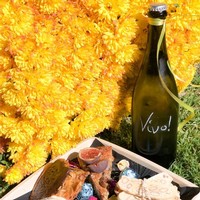
Both the Vivo (made using Vermentino or Arneis) and the Vivacé are both true to their Italian origins and to the summer life of Australia.
Salute!
Fantastic Figs!
Figs in one form or another have been on the planet for at least eighty million years.
Of course, its easy to stick around if there are more than 900 different species of you, which there are... But botanists have ascribed their longevity more to their characteristics than their range of varieties. To botanists, the winning factors are their universally beautiful taste, combined with their ‘accessibility’. No tough skin, for example.
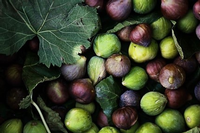
Figs attract the widest range of seed transporting animals in the whole of the plant kingdom. They are ecological linchpins, sustaining more wild birds and mammals than any other fruit tree on earth.
Figs are also the source of more myths and legends than any other fruit (or, more botanically correctly, a ‘false or multiple fruit', as the flowers and seeds grow together to form one gorgeous single ‘mass’).
Figs at di Lusso
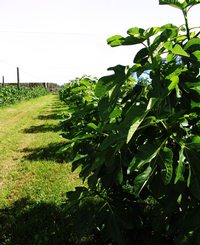 We grow five varieties of common fig at di Lusso Estate. All are female parthenocarpic varieties, and do not need pollination to produce fruit. So no need to deal with those little propagating wasps! Every year since 2003, my girls have performed the same ritual.
We grow five varieties of common fig at di Lusso Estate. All are female parthenocarpic varieties, and do not need pollination to produce fruit. So no need to deal with those little propagating wasps! Every year since 2003, my girls have performed the same ritual.
First, a showing of Black Genoa ripeness tells me it’s the second week of February.
A week later, it’s the turn of the White Adriatics (my favourite flavour, if I’m pushed to name one) to come to ripeness, with a more sustained season of six weeks or so. Meanwhile, my two lesser varieties Preston Prolific and Excel start moving.
Back comes Black Genoa with another season, then the mind-boggling champion of the orchard and juggernaut - Brown Turkey.
This lovely, patient variety is last to move, but more than makes up for this with a massive crop of around 1500 figs a tree that grows to the very top of the fig enclosure (or more than four metres). It is primarily the brown Turkey that keeps producing until the first frosts of May.
di Lusso Fig Products
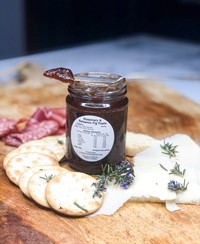
Steve Pavich, the Estate’s fig man, is out there almost every day, picking up to two thousand figs a day; sorting the crop between cellar door stock and crushed figs for ‘product’.
Product then moves under the control of Marcus Platt (one of several genii I’m blessed with at di Lusso) and who delivers a half dozen different flavours of fig pastes and vinaigrette (amongst much more farm produce) to the farmhouse door for our visitors.
And while all this is happening, the resident di Lusso spiders are ensuring the quality of the crop. I have never had to spray the figs in nearly twenty years, thanks to our golden orb weaver army that descends onto the trees as soon as the annual fig gnat plague begins early February.
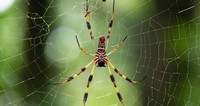
These magnificent spider-hunters grow from 5 mm (.2 of an inch) to 5 cm (2 inches) in a season – and end up comprised entirely of exactly what I don’t want to find on the crop. (The only disconcerting feature is their habit of building their nets across the inter-rows of the orchard; meaning that driving the ride-on mower becomes a very interesting, and gastronomic experience!
Robert
Arneis. The Re-birth of a Classic
Origins
This variety, native to the hillsides of the Roero near Alba in Piedmont, was a classic white table wine variety at least as long ago as 1350 AD. Over the centuries since, with its characteristic of zero tannin and pleasant perfumed aromatics, it became used more as a blending agent to reduce the notoriously fierce tannins of Nebbiolo…in particular the tannic brooding styles from the villages of Barolo and Barbaresco.
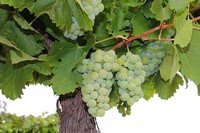
In the last eighty years or so, however, its usefulness as a blending agent to modify the ‘aggression’ of Nebbiolo further declined. Producers started using other methods of bringing the drinkability of Nebbiolo forward by a decade or more – from up to twenty years down to around five or so. Only a couple of producers (including notably Vietti, another favourite of ours) didn’t lose faith in it as a varietal white table wine.
Grapes contain thousands of tannic compounds, known as phenolics. Most of the tannins are in the skins and seeds, and they are extracted during the winemaking process. They are an excellent natural preservative, and give the wine structure. But some are harsh and bitter; and some taste "green" or unripe. Techniques such as micro-oxygenation (for tannins) and malolactic fermentation (for harsh acidity) became standard in the industry in the second half of the twentieth century, and wholesale replacement of Arneis with Barbera and Nebbiolo occurred.
Folklore has it that Arneis retreated to two vineyards, when someone asked the question, “What do think this tastes like as a table wine?” And of course, as they say, the rest is history.
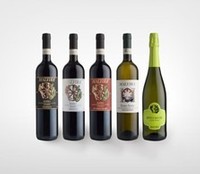
Our favourite Arneis producer, Malvira, has certainly taken advantage of this renewed popularity. Their winery, just a stone’s throw from the village of Barbaresco, produces FIVE different wine styles from the Arneis grape – a ‘regular’ dry white and a premium of the same vintage, a sparkling Arneis, an Arneis rosé and a vin santo style!
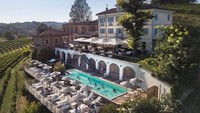
The fifty-meter strip of lawn from Malvira’s winery to the vineyard, when we visited there in 2009, was lawn. Today, their website features a luxury boutique hotel – complete with a magnificent swimming pool.
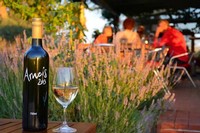
At di Lusso Estate, we planted just over an acre of Arneis on our Brambletyne site. Despite the variety’s reputation as being ‘tricky in the vineyard’, our experience is positive. And equally so in the winery, with a succession of good wines that provide the basis for our Vivo! bubbly.
Rob